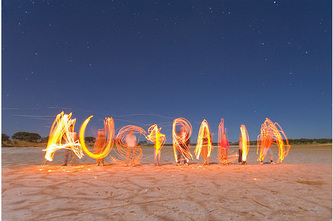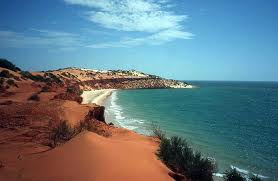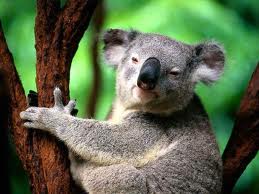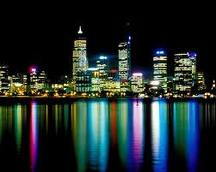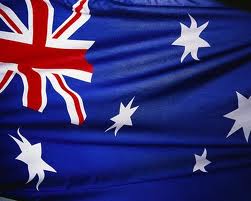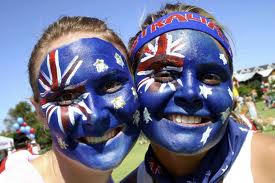Geography
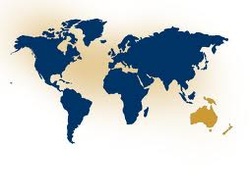
Australia is officially known as the Commonwealth of Australia (U.S. Department of State). It is located in Oceania, the world's sixth smallest continent, between the Indian Ocean and the South Pacific Ocean, but it is the world's sixth largest country (CIA). The climate there is generally arid to semiarid, so it is often subject to drought (CIA). Temperatures are temperate in the south and the east, and tropical in the north (U.S. Department of State). There are low plateaus with deserts and fertile plain in the southeast (CIA). There are sometimes cyclones along the coast, along with forest fires and severe droughts (CIA). Its terrain is varied, but generally low-lying. Australia covers 7.7 square kilometres of land (U.S. Department of State).

Australia is not linked by land to any other countries because it is completely surrounded by water. However, Papua New Guinea, New Zeland, and Indonesia are countries that are close to Australia.
Language and Culture
Australia has a population of 21 515 700 (CIA). Its official language is English (U.S. Department of State). According to the 2006 Census, 78.5% of Australians speak English, 2.5% speak Chinese, 1.6% speak Italian, 1.3% speak Greek, 1.3% speak Arabic, and 1% speak Vietnamese. 5.7% of the population speaks an unspecified language, and the other minority languages take up 8.2% of the population (CIA). The ethnic groups are White, at 92%, Asian, 7%, and aboriginal and other at 1% (CIA). The religions are Catholic-26%, Anglican-19%, other Christian-19%, other non-Christian-1%, Buddhist- 2.1%, Islam-1.7%, no religion-19%, and 12% of the population has a an unstated religion (U.S. Department of State). Much of Australia's culture comes from its European roots, but distinctive Australian culture comes from the Australian environment and the Aboriginal culture (U.S. Department of State). Australian actors, comedians, writers, and Olympic athletes are well-known throughout the world (U.S. Department of State).
Politics
Australia has a federal government democracy and a Commonwealth realm government type (CIA). It has a consitutional monarchy (U.S. Department of State). Its independence day was January 1, 1901, when it became its own country, instead of being a British colony (CIA). It has three branches- executive, judicial, and legislative (U.S. Department of State). Canberra is the capital (CIA). The political parties are Australian Labor, the LIberals, the Greens, the Nationals, and Family First (U.S. Department of State). In 2010, the government will focus on raising Australia's economic productivity, managing the symbolic, but tense economic relationship with China, passing emissions trading legislation, and dealing with other climate-related issues such as drought and devastating bushfires (U.S. Department of State).
Economics
Australia's abundant and diverse natural resources attract high levels of foreign investment and include extensive reserves of coal, iron ore, copper, gold, natural gas, uranium, and renewable energy sources (CIA). Australia also has a large services sector and is a significant exporter of natural resources, energy and food (CIA). Mining, industrial and trasportation equipiment, food processing, steel and chemicals are major industries (CIA). Wheat, barley, sugarcane, fruits, cattle, sheep and poultry are also large exports (CIA). Australia is engaged in the Trans-Pacific Partnership talks and ongoing free trade agreement negotiations with China and Japan (CIA). It has a work force of 10.8 million people (U.S. Department of State). It can be divided as agriculture, fishing, and forestry-3.25%, mining-1.6%, manufacturing-9%, retail trade-10.7%, public administration, defence, and ministry-6.2%, and construction-9% (U.S. Department of State).
